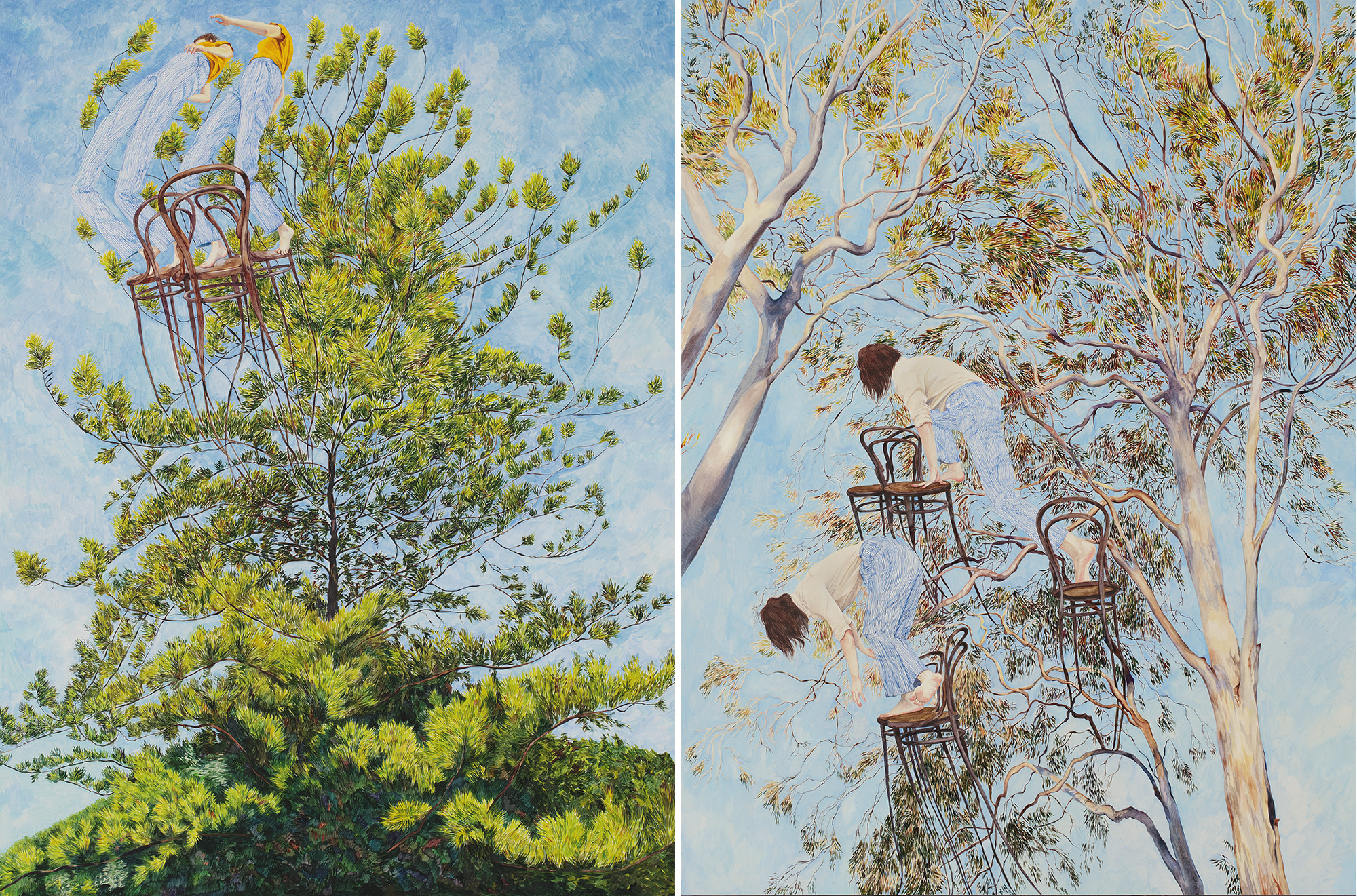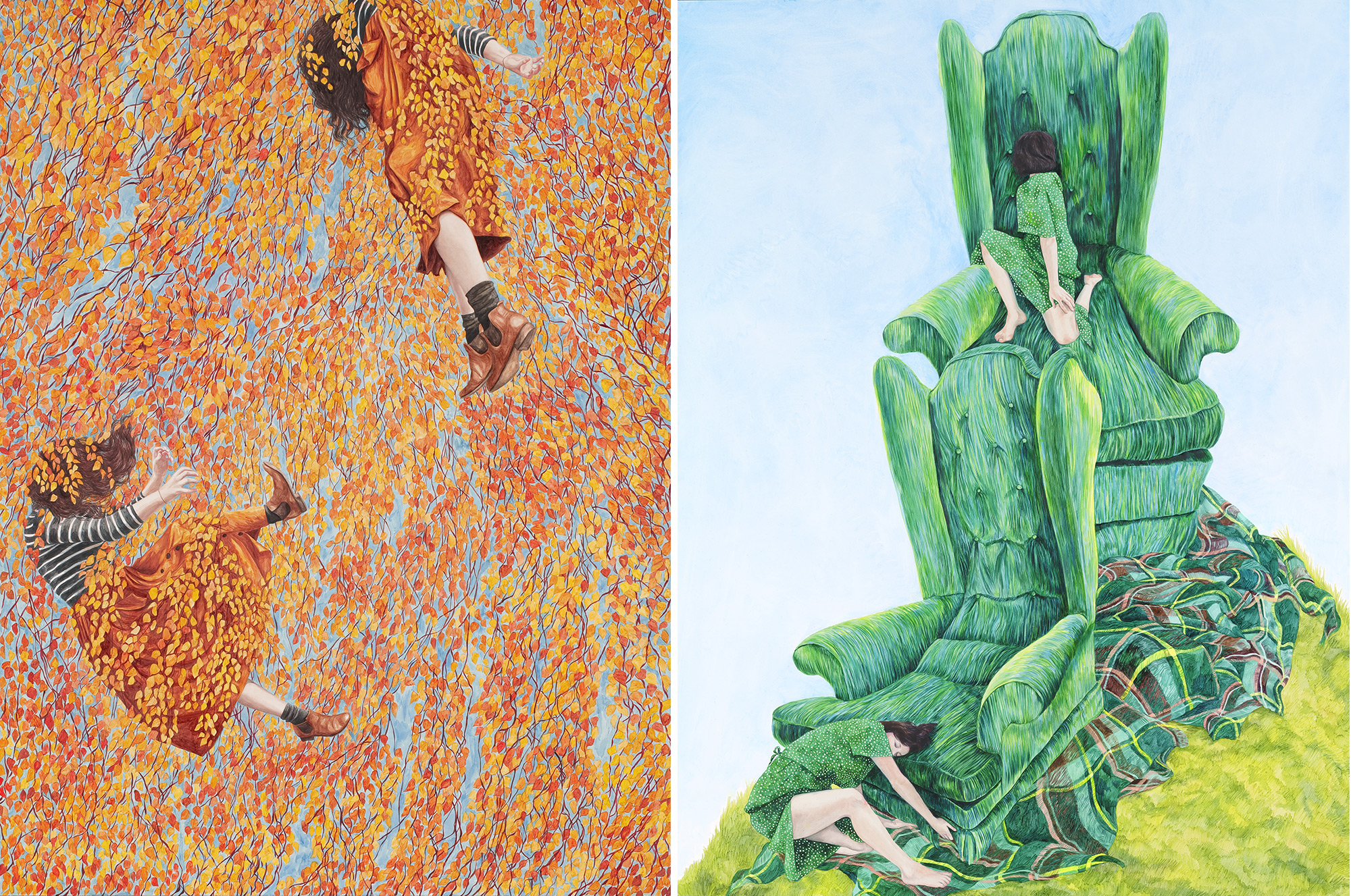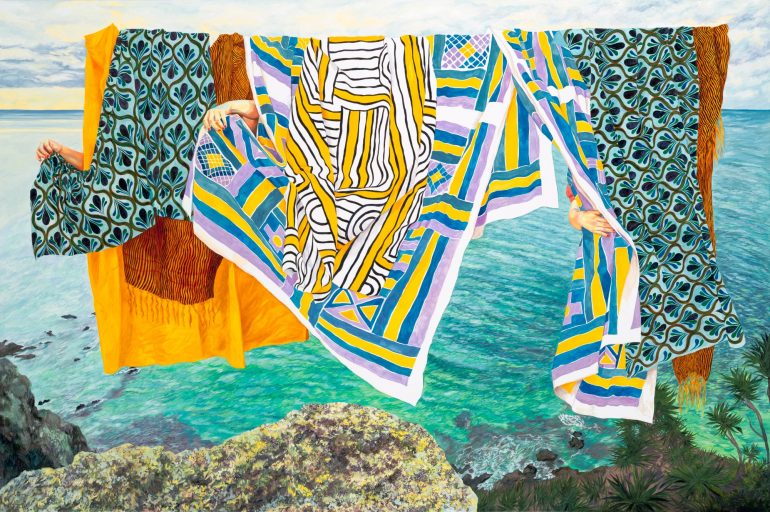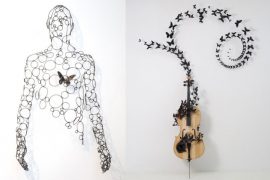Draped over invisible clotheslines, vintage fabrics conceal seaside vistas, meadows teeming with dried grasses, and craggy walls of stone in Monica Rohan’s latest works. Known for her deft portrayals of pattern and the dimensions of folded textiles, Rohan continues to contrast domestic, human-made material with more organic surroundings.
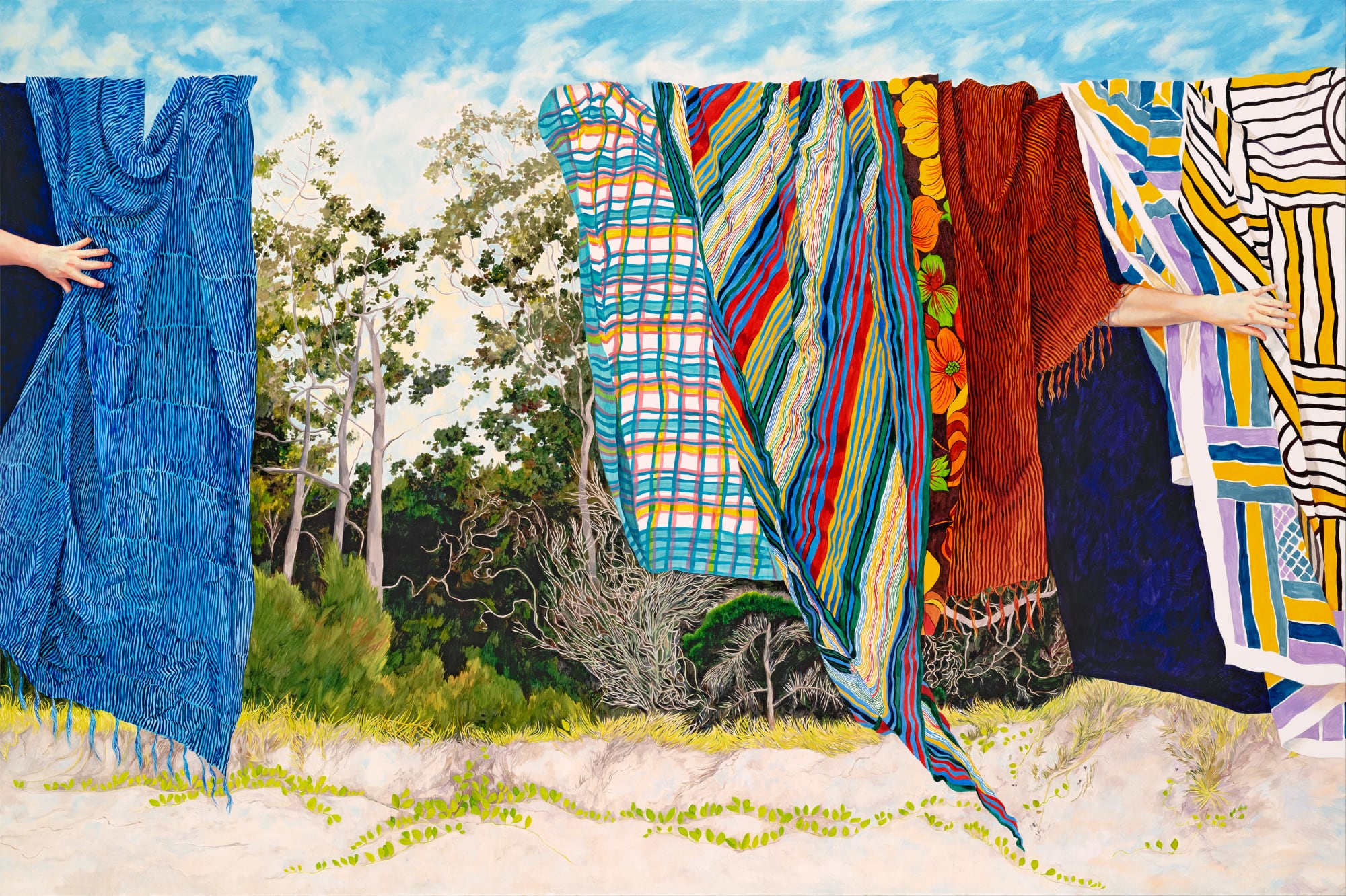
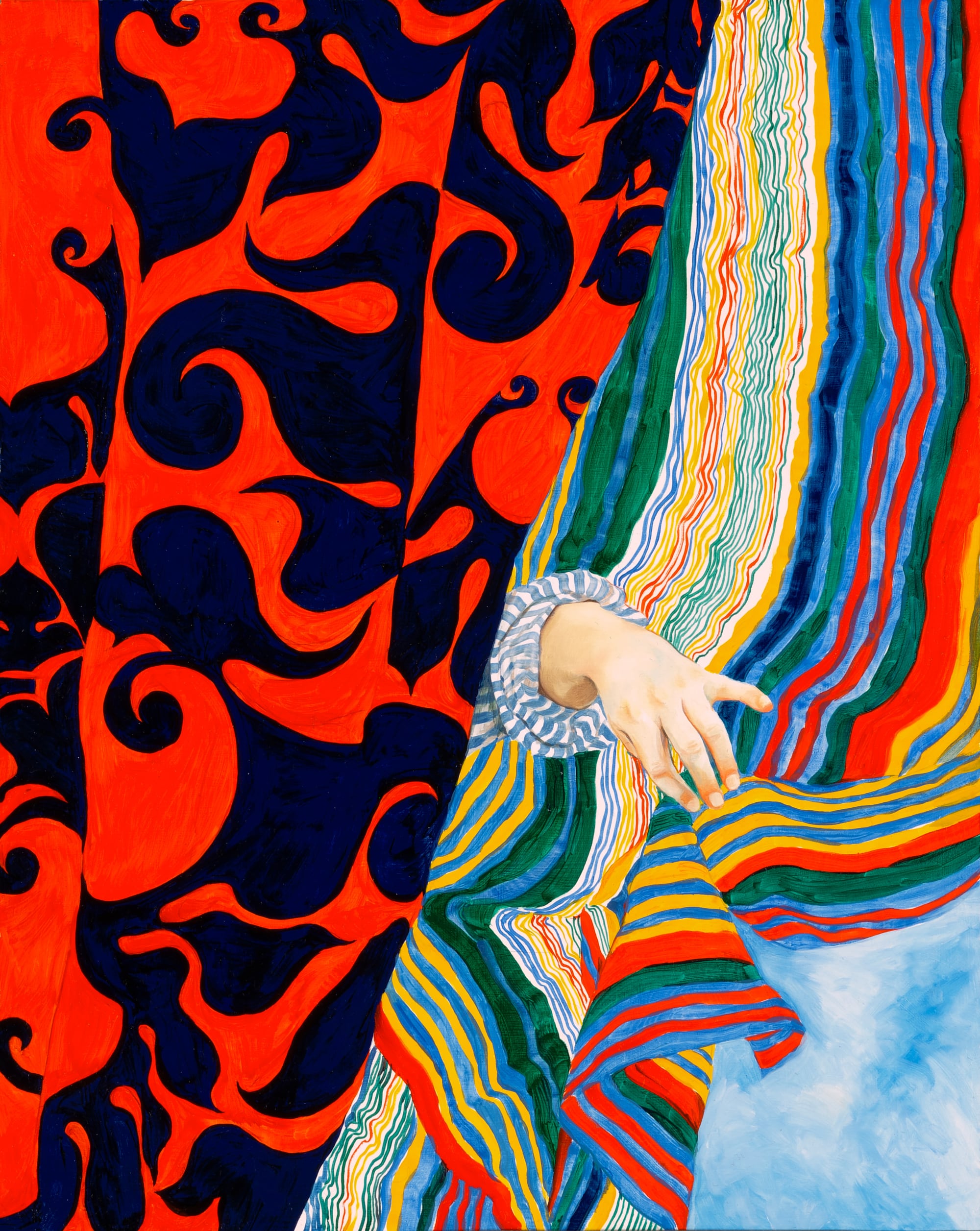
In this series, disembodied limbs draw back the suspended curtains, slowly uncovering the otherwise concealed landscapes. The stage-like nature of the paintings draws connections between the limited duration of theatrical performances and the impending losses caused by the climate crisis as they channel “feelings of anxiety and concern toward landscapes under threat,” the artist says.
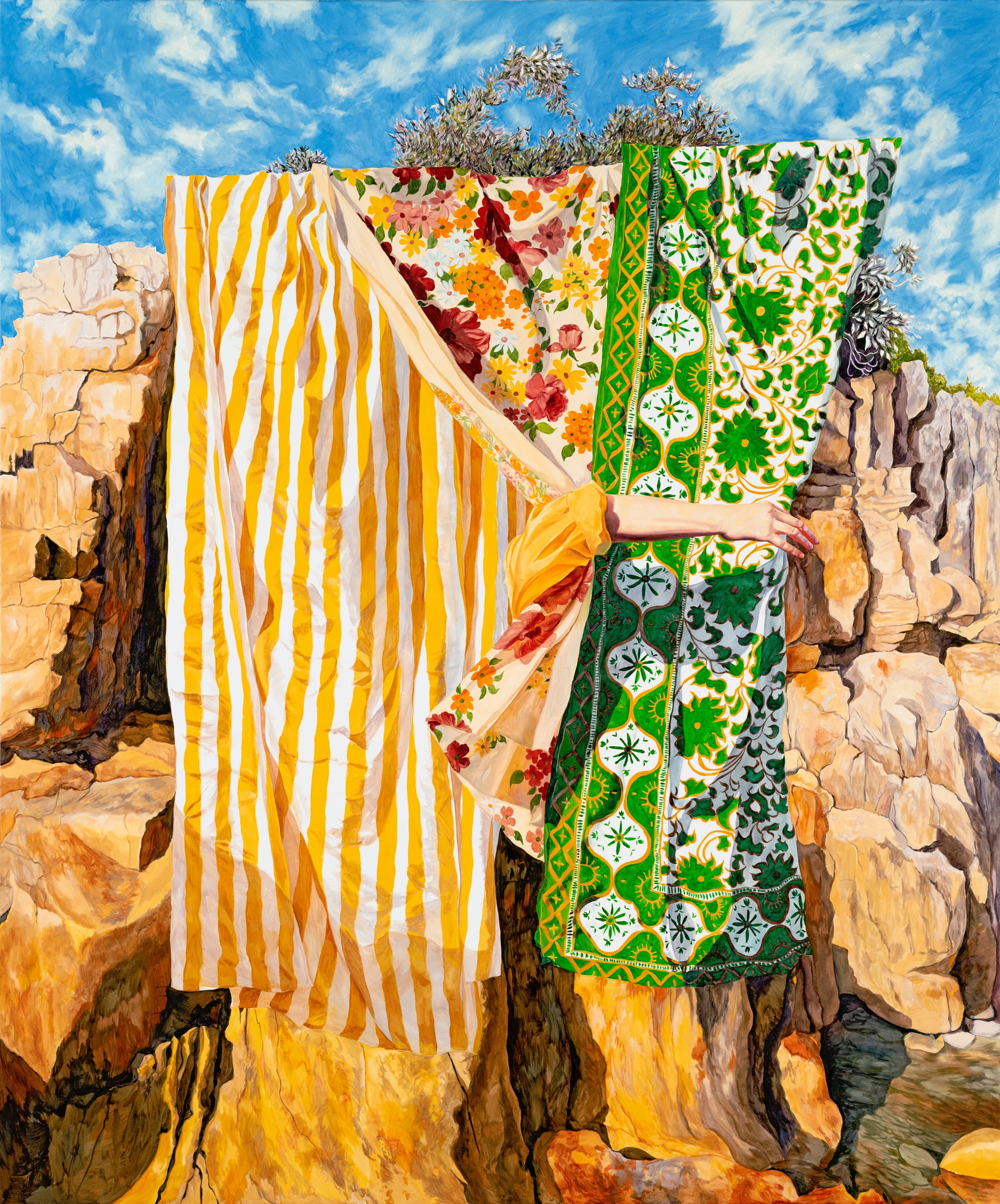
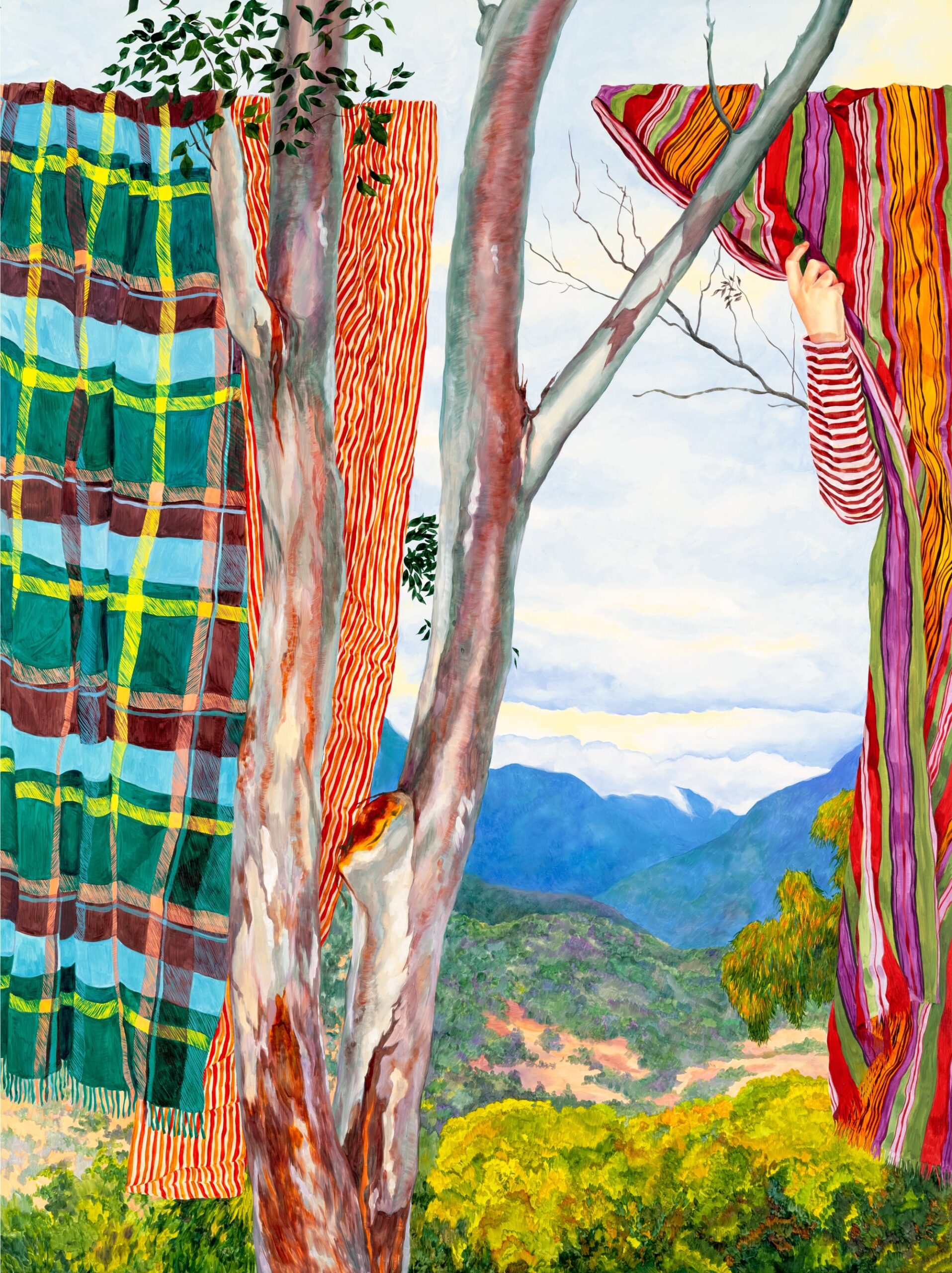
Each is serene with calm waters, sunny skies, and an easiness to its existence, and all notably lack evidence of human civilization. Devoid of a body, the hands add an uncanny tension to the works, as they direct viewers toward what lies behind the curtains and emphasize, as the title suggests, “that the show is about to start.”
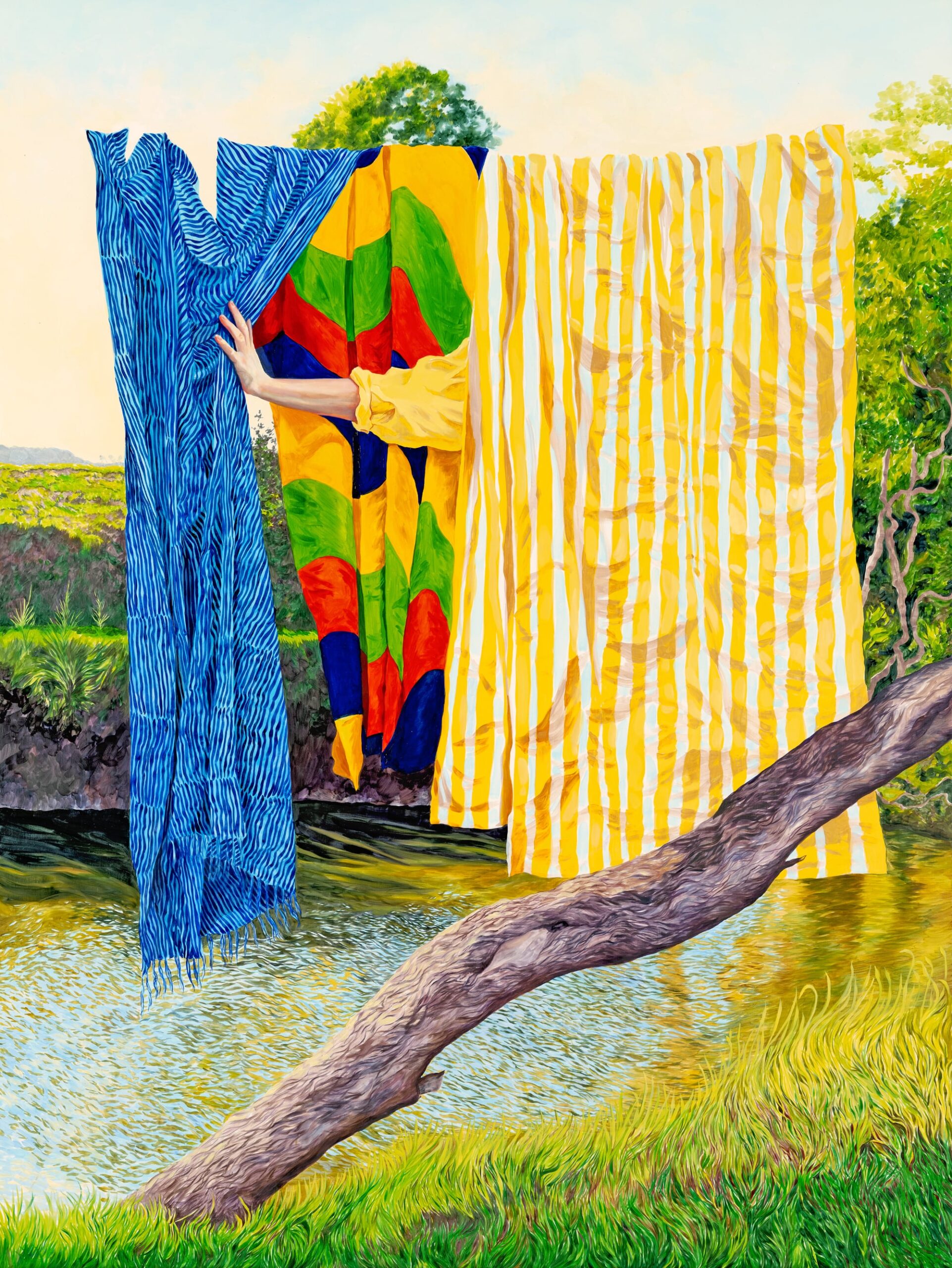

The artist renders the vast landscapes of her native Australia in a new series of oil paintings as part of Disappearing Act, her solo show on view later this month at Jan Murphy Gallery in Fortitude Valley, Queensland. Disappearing Act will run from April 26 to May 13.
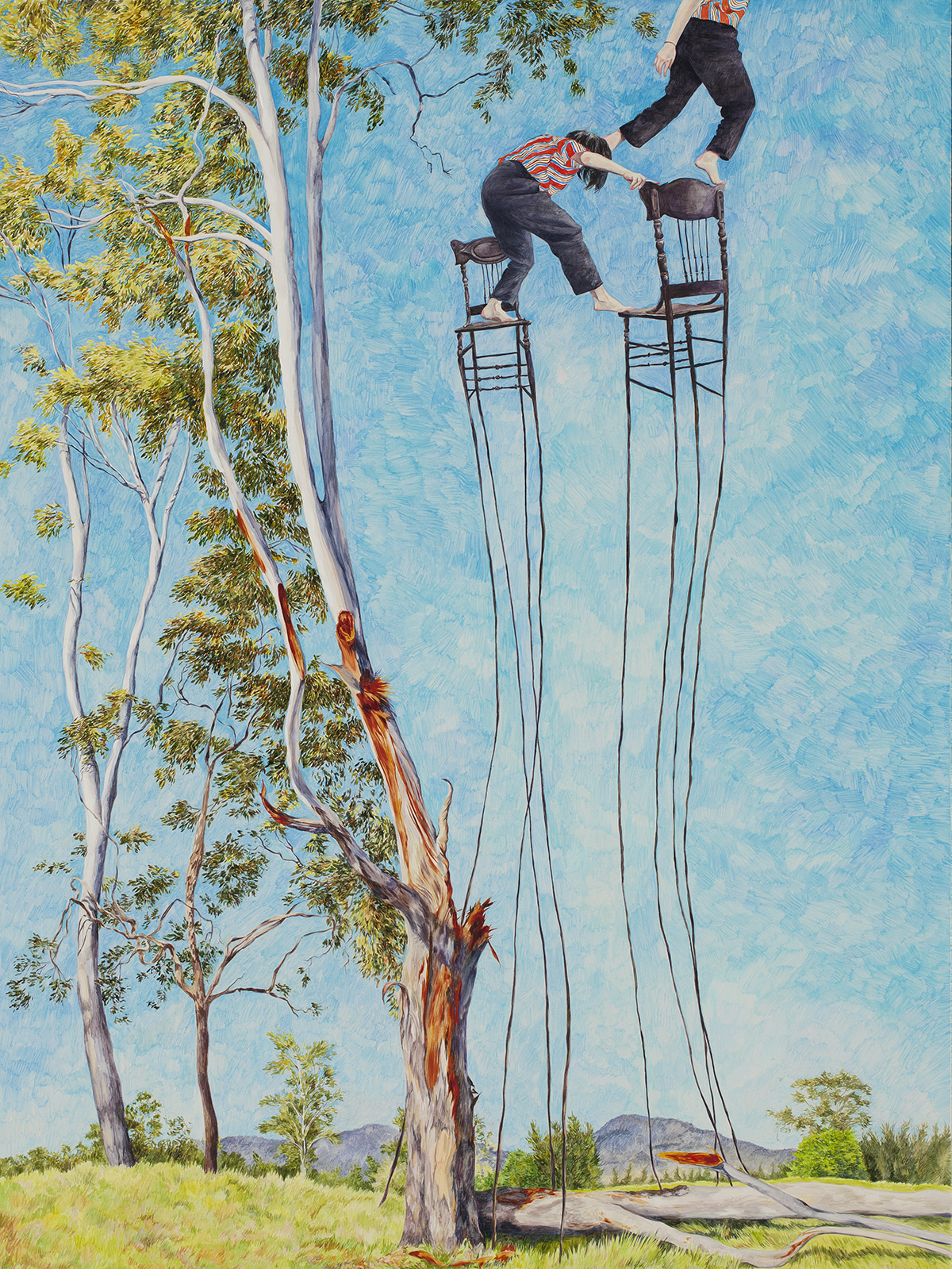
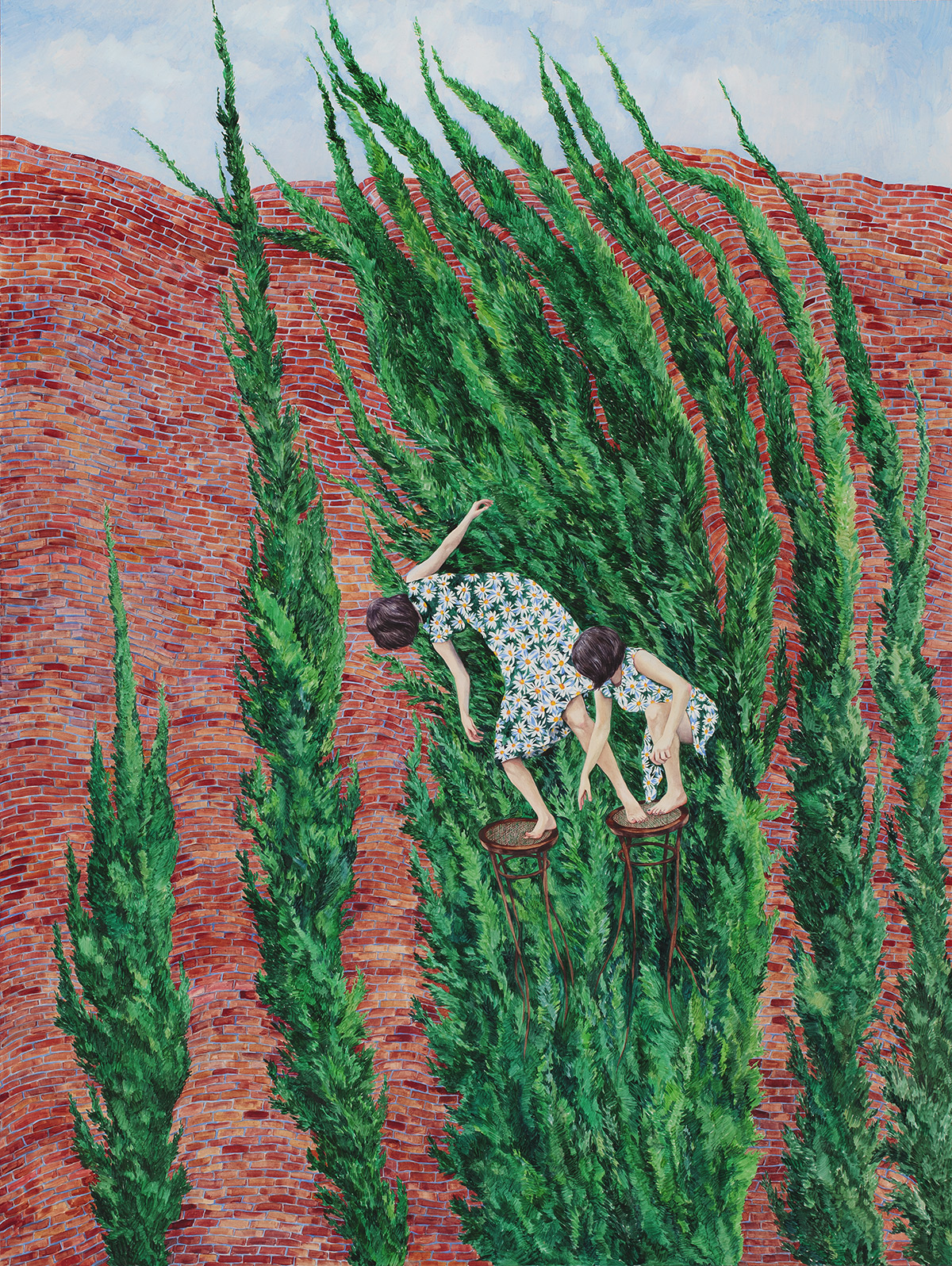
Often drawing from texts she’s reading—Charlotte Brontë’s Villette is one—Rohan imbues fictional tales into her works. She depicts adventurous subjects set amongst whimsical worlds of overgrown bushes, vibrant seas of fabric, and cloudless skies rendered in patches blue.
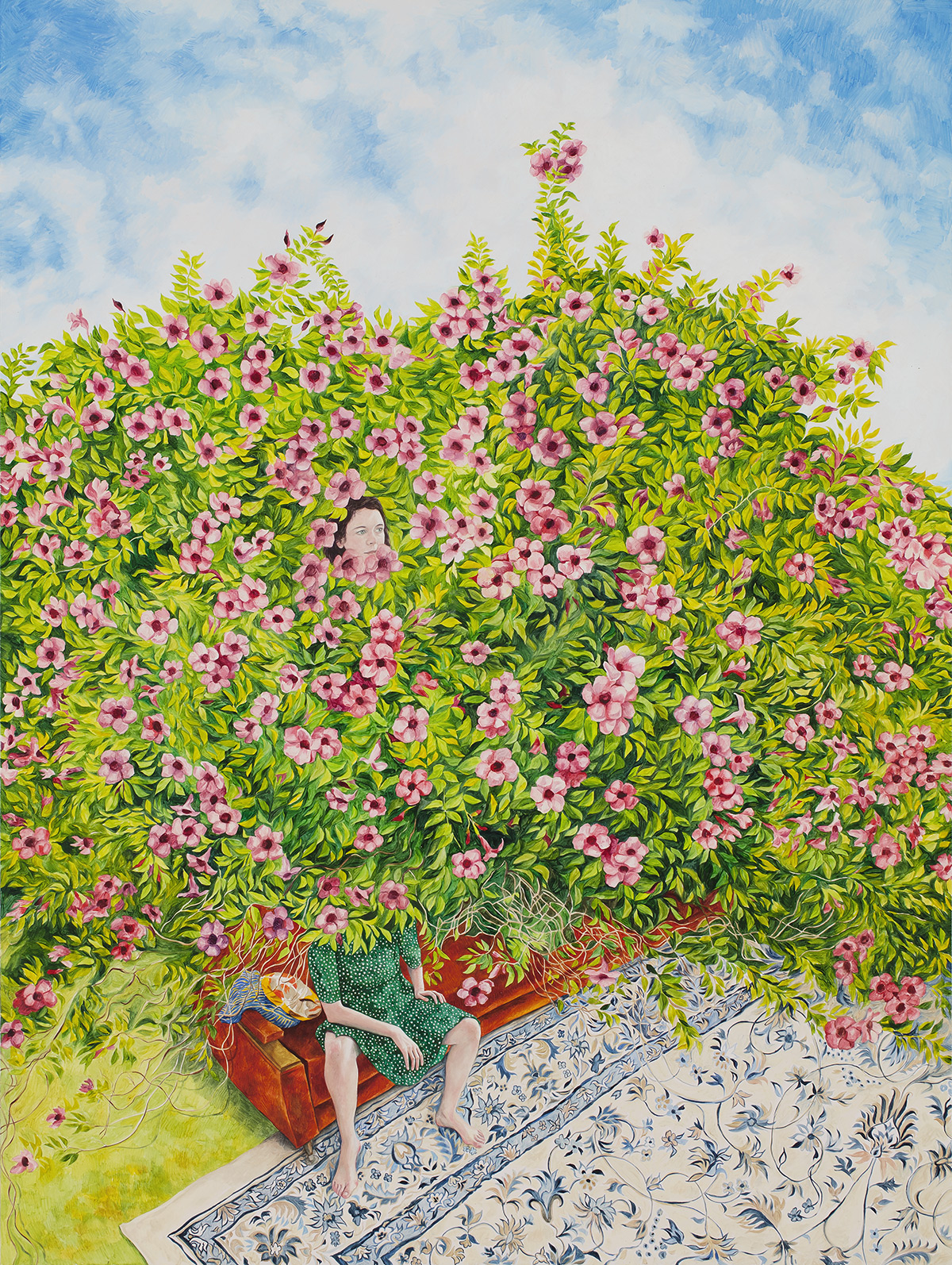
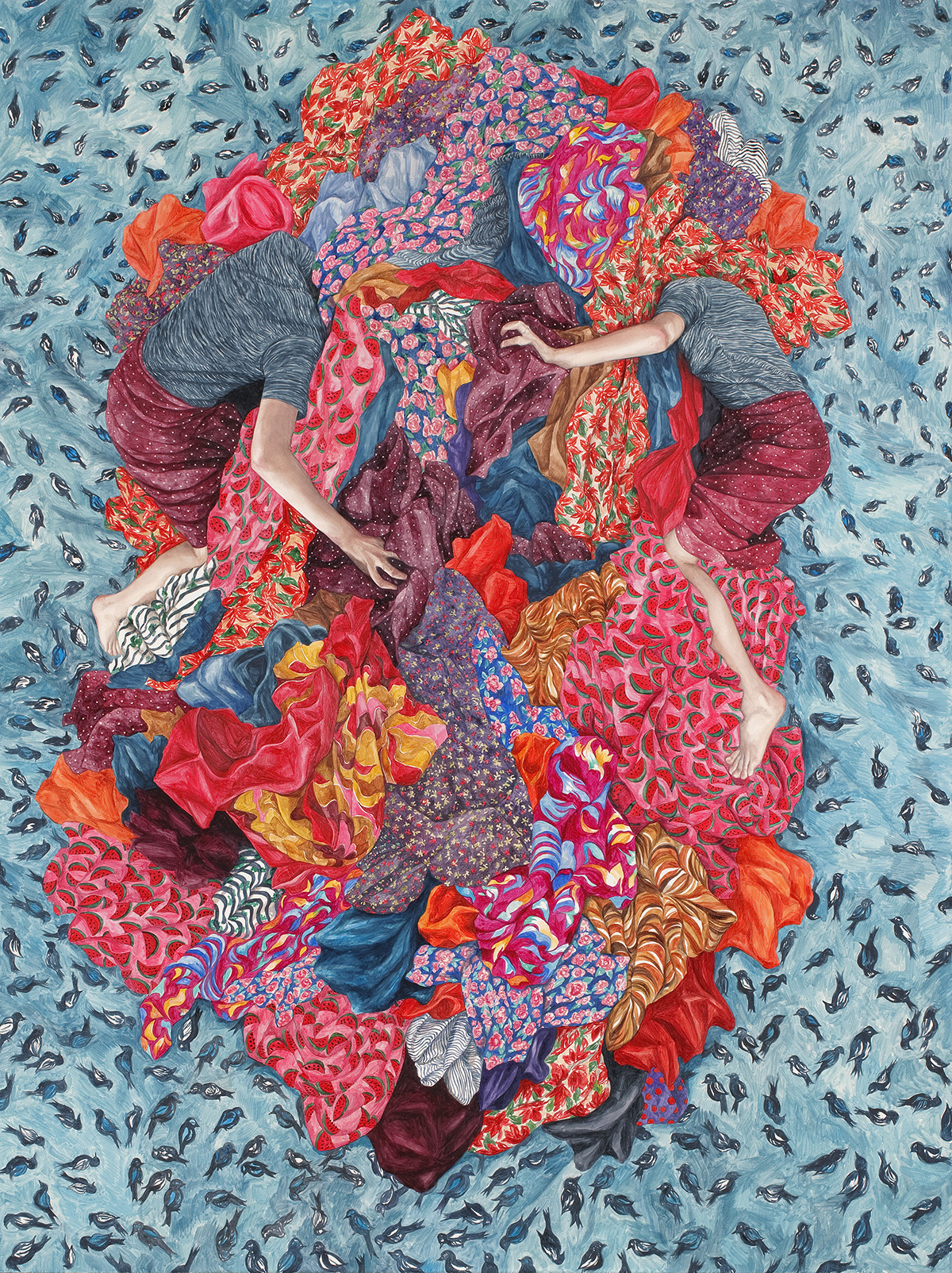
“I’m interested in when real life and fiction bleed into one another. I’ve always been an avid reader, but happily, nowadays I can read and paint at the same time thanks to audio-books. Often whatever I’m reading filters through into titles for works and indirectly into the paintings themselves,” she says.


